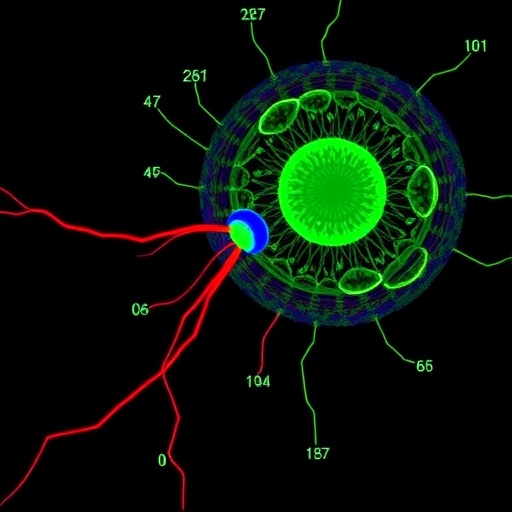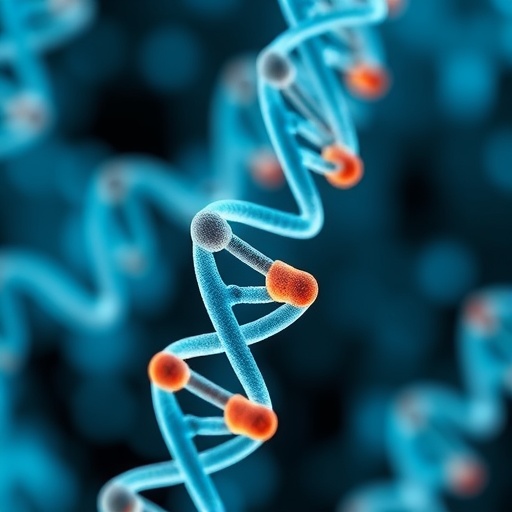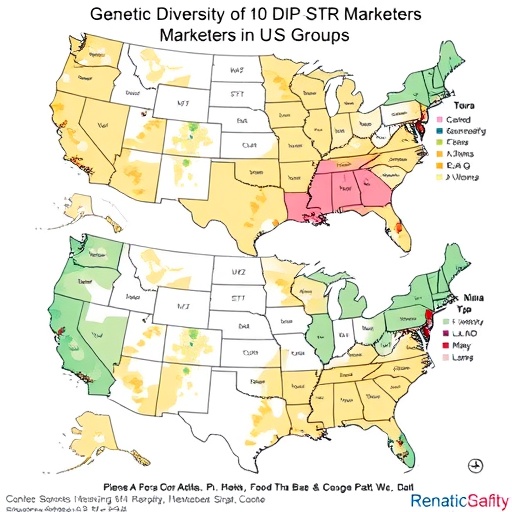In a groundbreaking study published in Nature Communications, researchers have uncovered a pivotal role of macrophage-derived amphiregulin in driving cellular transformations within bone marrow microenvironments challenged by bacterial infection. The study reveals how amphiregulin, a growth factor secreted by immune cells, orchestrates the myofibroblast transition of adipogenic lineage precursors adjacent to Staphylococcus aureus abscesses in bone marrow. This discovery not only deepens our understanding of host response mechanisms at the cellular level but also opens new avenues for therapeutic intervention in infectious and fibrotic diseases.
Bone marrow, traditionally known as the site of hematopoiesis, harbors a complex niche where immune cells, stromal cells, and precursor populations interact dynamically. When challenged with bacterial agents such as Staphylococcus aureus, the bone marrow’s immunological and regenerative landscape undergoes dramatic remodeling. The formation of abscesses—a hallmark of persistent bacterial infection—involves profound cellular crosstalk that governs tissue repair and fibrosis. However, the molecular signals orchestrating these processes remained poorly understood until this pivotal investigation.
Central to this study is amphiregulin (AREG), a member of the epidermal growth factor (EGF) family that has been implicated in various reparative and pathological processes. Prior to this research, amphiregulin’s role was primarily recognized in epithelial regeneration and cancer biology. Here, the authors reveal its unexpected function in the immune-stromal dialogue within bone marrow abscesses, where macrophages serve as a major source of this cytokine. This insight accentuates the intricate involvement of immune cells beyond mere pathogen clearance.
The team employed a range of cutting-edge techniques, including single-cell RNA sequencing, lineage tracing, and immunohistochemistry, to map cellular phenotypes and signaling pathways. They demonstrated that macrophages recruited to the sites of infection secrete amphiregulin which then acts on neighboring adipogenic lineage precursor cells. These precursors, originally programmed to generate adipocytes, undergo a phenotypic switch and acquire myofibroblast characteristics—a process that fuels fibrotic remodeling around the abscess.
Myofibroblasts are specialized contractile cells that play a crucial role in wound healing and fibrosis. Their presence within the bone marrow abscess milieu implicates them as key drivers of extracellular matrix deposition and scar tissue formation, which can influence both infection resolution and bone marrow function. Understanding how adipogenic precursors convert into myofibroblasts under the influence of amphiregulin bridges a critical gap in the knowledge of post-infectious tissue remodeling.
The findings underline a dual function for macrophages: beyond immune defense, these cells actively reshape the stromal environment by modulating precursor cell fate. This functional plasticity suggests that macrophages are central regulators not only in antimicrobial defense but also in reparative fibrosis, highlighting potential targets for therapeutic modulation in conditions ranging from chronic osteomyelitis to marrow fibrosis.
Further mechanistic dissection revealed that amphiregulin signals predominantly through the epidermal growth factor receptor (EGFR) on adipogenic precursors, triggering signaling cascades that culminate in the expression of myofibroblast markers such as alpha-smooth muscle actin (α-SMA). This receptor-ligand interaction delineates a signaling axis critical for the pathologic remodeling observed and identifies EGFR pathways as candidate targets for intervention.
The study’s use of in vivo models of S. aureus bone infection allowed for temporal and spatial resolution of cellular events, firmly establishing the causal link between macrophage-derived amphiregulin and myofibroblast emergence. The convergence of infection biology with tissue regeneration and fibrosis rendered this work remarkably interdisciplinary, inviting a reevaluation of host-pathogen dynamics within bone tissue.
Adding another layer of significance, the research sheds light on the plasticity of adipogenic lineage precursors, a progenitor cell pool previously appreciated primarily for its role in adipose tissue maintenance. Their transition to a fibrogenic state challenges the canonical view of their lineage restriction and suggests that tissue context and inflammatory cues profoundly modulate precursor fate decisions.
Clinically, this discovery has notable implications. Infections caused by S. aureus are notorious for chronicity and recurrence, often accompanied by destructive tissue remodeling. Targeting the amphiregulin-EGFR axis offers a promising therapeutic pathway to mitigate fibrosis and improve functional outcomes post-infection. The modulation of immune-stromal interactions may thus emerge as a novel strategy to balance pathogen clearance with tissue preservation.
Moreover, the study provides a platform to explore similar cellular transitions in other infectious and inflammatory contexts. Fibrosis is a common sequela of diverse tissue injuries, and identifying universal mediators such as amphiregulin could facilitate the development of broad-spectrum anti-fibrotic therapies. This positions the current findings at the forefront of regenerative medicine and infection biology.
This research also illuminates the complexity of the bone marrow microenvironment as a dynamic arena where immune responses and tissue remodeling intersect. Understanding these interactions at a granular level enriches our comprehension of bone marrow pathology and paves the way for innovations in treating hematologic and infectious diseases.
Future studies will undoubtedly delve deeper into the downstream signaling pathways activated by amphiregulin in adipogenic precursors and explore whether similar mechanisms operate in other tissue niches. Furthermore, the interactions between macrophages, stem/progenitor populations, and other stromal cells will likely yield insights critical to designing targeted interventions.
In sum, the discovery that macrophage-derived amphiregulin induces a myofibroblast transition in adipogenic lineage precursors near S. aureus abscesses represents a major leap in our understanding of infection-induced fibrosis within bone marrow. By unveiling how immune-derived signals can transdifferentiate stromal progenitors, this study offers a blueprint for tuning repair mechanisms and addressing pathological fibrosis, thereby reshaping the future of infectious disease management and regenerative therapies.
Subject of Research: The molecular and cellular mechanisms by which macrophage-derived amphiregulin induces myofibroblast transition in adipogenic lineage precursors in the context of Staphylococcus aureus-induced abscess formation in bone marrow.
Article Title: Macrophage-derived amphiregulin induces myofibroblast transition in adipogenic lineage precursors near Staphylococcus aureus abscess in bone marrow.
Article References:
Yang, B., Su, J., Wu, J. et al., Nat Commun 16, 8409 (2025). https://doi.org/10.1038/s41467-025-63551-7
Image Credits: AI Generated
Tags: adipogenic lineage precursorsbacterial infection impact on bone marrowbone marrow cellular transformationscellular crosstalk in tissue repairepidermal growth factor familyfibrotic disease treatmentimmune response mechanismsmacrophage function in fibrosismacrophage-derived amphiregulinmyofibroblast transitionStaphylococcus aureus abscessestherapeutic intervention in infectious diseases





